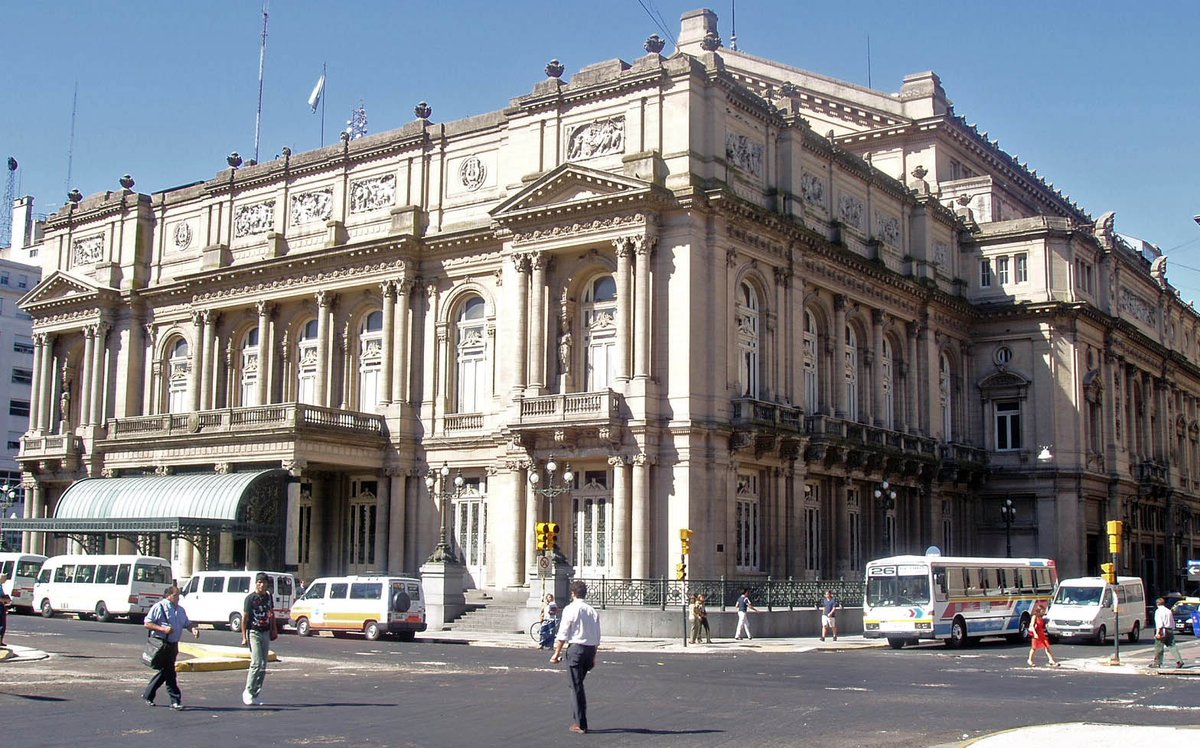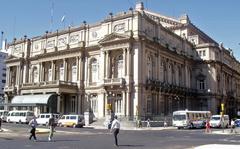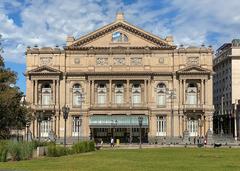
Visiting Teatro Colón: Hours, Tickets, and Historical Insights
Date: 16/07/2024
Introduction
The Teatro Colón in Buenos Aires, Argentina, is a must-visit destination for any cultural enthusiast. This iconic opera house, inaugurated on May 25, 1908, is renowned for its exceptional acoustics and stunning architecture, making it one of the most prestigious opera houses in the world (Teatro Colón History). Designed by Italian architect Francesco Tamburini, with contributions from Víctor Meano and Jules Dormal, the theater’s eclectic style combines elements of Italian Renaissance and French Baroque architecture, reflecting Argentina’s cultural aspirations and European connections (Architectural Digest). Over the years, Teatro Colón has hosted performances by legendary artists such as Enrico Caruso, Maria Callas, and Luciano Pavarotti, solidifying its status as a cultural beacon (Buenos Aires Government). This comprehensive guide will cover the history of Teatro Colón, ticket information, visiting hours, architectural features, and travel tips to help you make the most of your visit.
Table of Contents
- Introduction
- History of Teatro Colón
- Visitor Information
- Architectural and Acoustic Features
- Renovations and Restorations
- Cultural Impact and Legacy
- Notable Performances and Premieres
- FAQ
- Conclusion
History of Teatro Colón
Early Conception and Construction
The Teatro Colón, originally inaugurated on April 27, 1857, with a performance of Giuseppe Verdi’s “La Traviata,” quickly outgrew its initial location at Rivadavia and Reconquista streets. By the late 19th century, it became evident that a larger and more modern facility was necessary to meet the cultural demands of Buenos Aires.
In 1888, the decision was made to construct a new Teatro Colón. Italian architect Francesco Tamburini designed the building in a grandiose eclectic style, combining elements of Italian Renaissance and French Baroque architecture. After Tamburini’s death in 1891, his assistant Víctor Meano took over the project until his untimely death in 1904. Belgian architect Jules Dormal completed the construction, incorporating additional French influences.
Inauguration and Early Years
The new Teatro Colón was inaugurated on May 25, 1908, with a performance of Verdi’s “Aida.” The theater quickly gained a reputation as one of the finest opera houses globally, hosting performances by legendary artists such as Enrico Caruso and Maria Callas. Renowned conductors like Arturo Toscanini and Richard Strauss also graced its podium, further solidifying its status as a leading cultural institution.
Visitor Information
Teatro Colón Tickets
Tickets for performances at Teatro Colón can be purchased online through the official Teatro Colón website or at the box office. Prices vary depending on the performance and seating category. It is recommended to book tickets in advance, especially for popular shows.
Visiting Hours
Teatro Colón is open for guided tours from Monday to Sunday. Tours are available in multiple languages and typically last around an hour. For the most up-to-date visiting hours and tour schedules, please check the official website.
Travel Tips
- Location: Teatro Colón is located at Cerrito 628, Buenos Aires, Argentina.
- Accessibility: The theater is wheelchair accessible, and assistance is available for visitors with special needs. It is advisable to contact the theater in advance to arrange any necessary accommodations.
- Nearby Attractions: The theater is situated near other historical sites, including the Obelisk of Buenos Aires and Plaza de Mayo, making it an ideal starting point for exploring the city.
Architectural and Acoustic Features
The exterior of Teatro Colón is characterized by its grand façade, adorned with intricate sculptures and decorative elements. The interior boasts a horseshoe-shaped auditorium that can seat over 2,400 spectators. The auditorium is celebrated for its exceptional acoustics, attributed to the theater’s unique design and high-quality materials.
The stage is one of the largest globally, allowing for elaborate productions with complex sets and large casts. The theater also features advanced lighting and sound equipment, ensuring it remains at the forefront of modern theater technology.
Renovations and Restorations
Between 2006 and 2010, Teatro Colón underwent a comprehensive restoration to preserve its historical integrity while incorporating modern amenities. The project included the restoration of frescoes, sculptures, and chandeliers, as well as upgrades to the stage machinery and seating. Completed in time for the theater’s centennial celebration, the restored Teatro Colón was once again hailed as a masterpiece (Architectural Digest).
Cultural Impact and Legacy
Teatro Colón has played a pivotal role in shaping Argentina’s cultural landscape. It has hosted performances by some of the most influential artists and ensembles globally, serving as a platform for artistic expression and innovation. The theater’s Institute of Advanced Studies in Art offers training programs for young artists, while its outreach initiatives aim to make the arts accessible to a broader audience (Teatro Colón Cultural Impact).
Notable Performances and Premieres
Some of the most memorable events at Teatro Colón include the world premiere of Alberto Ginastera’s opera “Don Rodrigo” in 1964 and the South American premiere of Richard Wagner’s “Parsifal” in 1913. The theater has also hosted performances by Luciano Pavarotti, Plácido Domingo, and Rudolf Nureyev.
FAQ
What are the visiting hours of Teatro Colón?
Teatro Colón is open for guided tours from Monday to Sunday. For specific times, please check the official website.
How much are the tickets for Teatro Colón?
Ticket prices vary depending on the performance and seating category. Tickets can be purchased online or at the box office.
Is Teatro Colón wheelchair accessible?
Yes, the theater is wheelchair accessible, and assistance is available for visitors with special needs.
Conclusion
Teatro Colón stands as a testament to Argentina’s rich cultural heritage and commitment to the arts. Whether you’re an opera aficionado or a casual visitor, a trip to this iconic theater offers an unforgettable experience. For more information and to plan your visit, be sure to check the official Teatro Colón website and follow them on social media for the latest updates.
References
- Teatro Colón History, n.d., Teatro Colón https://www.teatrocolon.org.ar/en/history
- Teatro Colón Cultural Impact, n.d., Buenos Aires Government https://www.buenosaires.gob.ar/cultura/teatrocolon
- Teatro Colón Architectural Details, n.d., Architectural Digest https://www.architecturaldigest.com/story/teatro-colon-buenos-aires
- Teatro Colón Restoration, n.d., Architectural Digest https://www.architecturaldigest.com/story/teatro-colon-restoration































































































































































